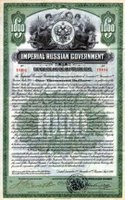
Know Junk Bond Before You Invest
A junk bond is typically a high-interest loan with relatively unfavorable terms to compensate for a high risk of default. Junk bonds are a type of high-yield debt, and by far the most common.
Bonds are rated according to the credit rating of the borrower. In the US, the major rating agencies are Fitch, Standard and Poor’s, and Moody’s. The rating scheme in descending order of value is: AAA, AA, A, BBB, BB, B, CCC, CC, C, D. Anything rated BB or below is generally considered to be a junk bond because the credit risk is so great.
In the modern economy, bonds are traded like any commodity. Investment companies try to maximize their profit by balancing the safety of an investment with the cost of the bond on the market. Junk bonds are very attractive to some investment groups because of their low cost.
In some cases, an investor may be prohibited by the bylaws of the group they belong to, such as a company pension fund, from purchasing any bonds rated below A or BB. This limitation makes the junk bond market considerably more limited than the market for high-graded bonds, commonly referred to as investment-grade bonds.
The use of the junk bond is widespread throughout sectors that require significant amounts of capital to operate. The telecommunications and energy sectors are two industries which utilize the junk bond extensively. Recently it has come to light that a number of companies have manipulated the appearance of their debt to help them receive a higher rating on their bonds so they could more easily trade them on the market.
Enron is probably the best known example of a company distorting apparent debt to make their portfolio not consist primarily of junk bonds. By hiding much of their debt off-book, Enron received higher ratings than they would otherwise have earned. WorldCom, similarly, was initially not rated as a junk bond company because of illicit accounting practices.
The junk bond also plays an important role in the leveraged buyout and hostile takeover, allowing groups of investment bankers to raise large amounts of capital to use in acquiring a target corporation, paying off the junk bond interest with the newly acquired corporation’s cash flow.
By Brendan McGuigan
http://www.wisegeek.com/









